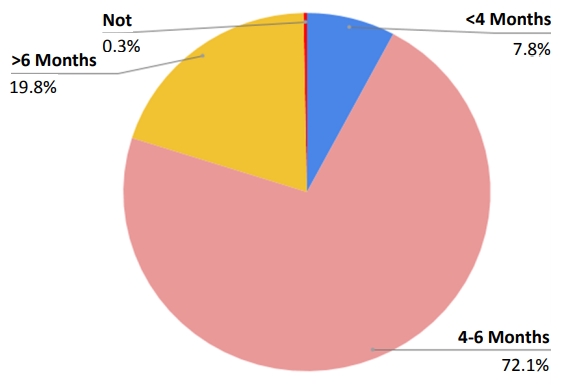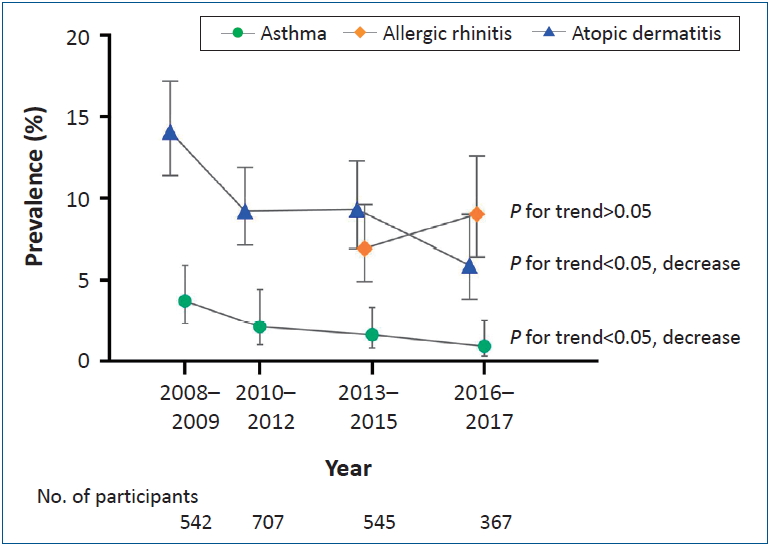- Review Article
- Allergy
- Global burden of asthma among children and adolescents with projections to 2050: a comprehensive review and forecasted modeling study
-
Tae Hyeon Kim, Hyunjee Kim, Jiyeon Oh, Soeun Kim, Michael Miligkos, Dong Keon Yon, Nikolaos G Papadopoulos
-
Clin Exp Pediatr. 2025;68(5):329-343. Published online April 22, 2025
-

|
Pediatric asthma can persist to adulthood and must be effectively managed. This review examined the prevalence of asthma among individuals younger than 20 years and revealed a decline from 1990 to 2021, higher rates in males, and a peak in children aged 5–9 years. Despite a projected continued decrease in prevalence by 2050, asthma will remain a significant health concern for children and adolescents. |
-
-
- Original Article
- Allergy
- Cohort profile: National Investigation of Birth Cohort in Korea study 2008 (NICKs-2008)
-
Ju Hee Kim, Jung Eun Lee, So Min Shim, Eun Kyo Ha, Dong Keon Yon, Ok Hyang Kim, Ji Hyeon Baek, Hyun Yong Koh, Kyu Young Chae, Seung Won Lee, Man Yong Han
-
Clin Exp Pediatr. 2021;64(9):480-488. Published online January 5, 2021
-

|
This national cohort study included all Korean children born in 2008 and 2009 observed over a period of more than 10 years. Our findings demonstrate that it is possible to analyze disease onset prior to hospitalization based on information such as lifestyle, eating habits, and risk factors by integrating National Health Insurance System data with national health screening data. |
-
-
- Ten-year trends and prevalence of asthma, allergic rhinitis, and atopic dermatitis among the Korean population, 2008–2017
-
Jihyun Ha, Seung Won Lee, Dong Keon Yon
-
Clin Exp Pediatr. 2020;63(7):278-283. Published online January 29, 2020
-

|
Background: Major questions remain regarding the agestratified trends of allergic diseases and asthma in Korea.
Purpose: To identify the estimated recent prevalence and 10- year trends in asthma, allergic rhinitis, and atopic dermatitis among the Korean population from 2008 to 2017.
Methods: This nationwide cross-sectional survey (Korean National Health and Nutrition Examination Survey) over 10 years (2008–2017) examined representative samples of the... |
-
-
|















